EDITOR'S NOTE: These are results reported Tuesday night by the Northampton County elections office for contested races within the county. They will remain unofficial until the vote is certified. Uncontested races are not shown.
NORTHAMPTON COUNTY
SUPREME COURT RETENTIONJustice Christine DonohueYes 54,111No. 32,643Justice Kevin M. DoughertyYes 54,064No 32,487Justice David WechtYes 53,533No 32,729
SUPERIOR COURT JUDGE(Vote for 1)Brandon Neuman, D 50,999Maria Battista, R 35,840Daniel Wassmer, L 1,697
COMMONWEALTH COURT JUDGE(Vote for 1)Stella Tsai, D 51,916Matt Wolford, R 36,210
COUNTY JUDGE, COMMON PLEAS(Vote for 1)Jeremy Clark, D 53,101James Fuller, R 35,293
COUNTY EXECUTIVE(Vote for 1)Tara Zrinski, D 52,687Tom Giovanni, R 35,993
COUNTY COUNCILAt largeFour-year term(Vote for 5)David Holland, D 49,676Theresa Fadem, D 48,260Lori Vargo Heffner, D 49,833Jason Boulette, D 48,436Nadeem Qayyum, D 44,915Sam Elias, R 35,340John P. Goffredo, R 34,880John Brown, R 34,556Daniel Campo, R. 34,670Juan E. Martinez, R 33,052
DISTRICT MAGISTRATE 03-3-026-year term(Vote for 1)Ellen S. Kingsley, D 2,851Robert Kemmerer, R 4,180
CITIES
BETHLEHEM
City Council(Vote for 4)Rachel Leon, D 9,151Hilary G. Kwiatek, D 9,001Justin Amman, D 8,954Jo Daniels, D 8,866Joseph F. Poplawski, R 3,378
EASTON
City CouncilDistrict 2(Vote for 1)Julie Zando-Dennis, D 760Sharbel Koorie, R 406
BOROUGHS
FREEMANSBURG
Mayor(Vote for 1)Gerald C. Yob, D 313Will Power, R 221
Borough Council4-year term(Vote for 3)Justine LaBar-Rossi, D 389Margaret Lorrah, D 371Beth Derr Zmijewski, D 374Monica Elliott, R 159
GLENDON
Mayor(Vote for 1)Melody McAllister, D 51Jeffrey M. Muschlitz, I 41
Borough Council(Vote for 2)Amy L. Weisenberger-Caswell, D 62Donald Young, R 29Kurt Ostrander, R 33
NORTH CATASAUQUA
Borough Council(Vote for 4)John Joseph Yanek, D 484Scott Holmes, R 386Michael Macsisak III, R 360Peter Paone, R 390Daniel Snyder, R 380c
PEN ARGYL
Borough CouncilWard 2(Vote for 1)Jolynn Holencik, D 135Roy Clewell, R 211
STOCKERTOWN
Mayor(Vote for 1)Rosemarie Wenzelberger, D 123Peter C. Dewey, R 189
Borough Council(Vote for 3)Katie Santiago, D 193Pamela J. Davis, D. 114Richard Wagner, D 160Peter C. Dewey, R 185Renee Cantwell, R 136
TATAMY
Borough Council(Vote for 3)Robert Hayes, R 197Nicholas Fisher, R 188
Holly Pierfy, D. 181
Joe Torrisi, R 161Tim Frey, I 122
WILSON BOROUGH
Borough CouncilWard 12-year term(Vote for 2)Grace Hurd, D 330Kendra Cooper, D 300Charles H. Wacik Jr., R 170
WIND GAP
Borough Council(Vote for 4)Danielle Weaver, D 388Joseph Romano, D 373Jack Rismiller, R 355Patrick M. Webber, R 346David Manzo, R 329
TOWNSHIPS
ALLEN TOWNSHIP
Supervisor(Vote for 2)Sean Sculley, D 928Jason M. Frack, R 787Gerald Montanari, R 739
BETHLEHEM TOWNSHIPCommissionerWard 2(Vote for 1)Matthew Deckman, D 1,205Steven Greco, R. 678
BUSHKILL TOWNSHIPSupervisor(Vote for 2)Randy R. Knauss, R 1,614Keith McKeon, R 1,604Angela Trilli-Braun, D 1,321
EAST ALLEN TOWNSHIPSupervisor4-year-term(Vote for 1)Louis Collins, D 964Eric Miller, R 769
FORKS TOWNSHIPSupervisor(Vote for 2)Amy Blum, D 3,182Derek Hughes, D 3,017Tim Hughes, R 2,345Gene Parziale, R 2,211
HANOVER TOWNSHIPSupervisor(Vote for 2)Stephen M. Gross, D 3,049Joseph Pepitone, D 2,609Barry Check, R 1,522Bill Pinter, R 1,397
LEHIGH TOWNSHIPSupervisor(Vote for 1)James T. Barnes, D 1,478Janet Sheats, R 1,764
LOWER MT. BETHEL TOWNSHIPSupervisor(Vote for 2)Robert Siegfried, R 510Jeffrey Keifer, R 504Susan E. Disidore, D 477
LOWER NAZARETH TOWNSHIPSupervisor(Vote for 1)Steve Brown, D 1,480Sherri Bourneuf, R 1,178
LOWER SAUCON TOWNSHIPCouncil(Vote for 2)Hunter Gress, D 2,271Chad G. Heimbecker, D 2,259Donna Louder, R 1,876Cheyenne Reiman, R 1,882
PALMER TOWNSHIPSupervisor(Vote for 2)Marcella R. Cardone, D 3,891Tung-To Lam, D 3,735Marc Crisafulli, R 3,090Robert Fehnel, R 2,845
PLAINFIELD TOWNSHIPSupervisor6-year-term(Vote for 1)Jane Mellert, R 1,036Ryan Stull, I 9162-year term(Vote for 1)Joseph Colosi, D 706Paul Levits, R 882Ryan Stull, I 587
UPPER MT. BETHEL TOWNSHIPSupervisor6-year term(Vote for 1)Courtney Gilmour, D 880Jonathan Erler, R 1,081
UPPER NAZARETH TOWNSHIPSupervisor(Vote for 2)Kristin Mullen, D 1,245JR Williams, D 1,183Dean Lewis, R 913George Bonomo, R 868
WILLIAMS TOWNSHIPSupervisor(Vote for 1)Raymond Abert, D 1,320Thomas Little, R 1,023

 484-896-8867
484-896-8867




 Service Areas
Service Areas























